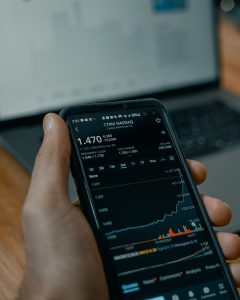Setting a stop loss or take profit (TP) in forex is a crucial aspect of risk management. A stop loss is a predetermined level at which you will exit a trade in order to minimize your losses, while a take profit is the level at which you will exit a trade to lock in profits. Setting these levels correctly can make the difference between a profitable and losing trade.
Step 1: Identify the market conditions and your trading strategy
Before setting a stop loss or take profit, it’s important to identify the market conditions and your trading strategy. For example, if you are trading during a highly volatile market, you may want to set a wider stop loss to avoid being stopped out too early. Similarly, if you are trading a long-term trend, you may want to set a wider take profit to capture more profits.
Step 2: Determine the risk-reward ratio
The risk-reward ratio is the ratio of your potential profit to your potential loss. It’s important to determine this ratio before setting your stop loss and take profit. A good risk-reward ratio is typically 2:1 or higher, meaning that your potential profit is at least twice as much as your potential loss.
Step 3: Calculate the stop loss
The stop loss is the level at which you will exit a trade to limit your losses. To calculate your stop loss, you can use technical analysis tools such as support and resistance levels or moving averages. You can also use volatility indicators to determine the appropriate distance from the entry point to set your stop loss. A common rule of thumb is to set your stop loss at a level that is no more than 2% of your account balance.
Step 4: Set the take profit
The take profit is the level at which you will exit a trade to lock in profits. To set your take profit, you can use technical analysis tools such as Fibonacci retracements or pivot points. You can also use the risk-reward ratio to determine the appropriate distance from the entry point to set your take profit.
Step 5: Monitor your trade
Once you have set your stop loss and take profit, it’s important to monitor your trade. If the market conditions change, you may need to adjust your stop loss or take profit accordingly. For example, if the market becomes more volatile, you may need to widen your stop loss to avoid being stopped out too early.
In conclusion, setting a stop loss and take profit in forex is essential for managing risk and maximizing profits. By following these five steps, you can set your levels effectively and increase your chances of success in the forex market. Remember to always keep an eye on the market conditions and adjust your levels accordingly to stay ahead of the game.





